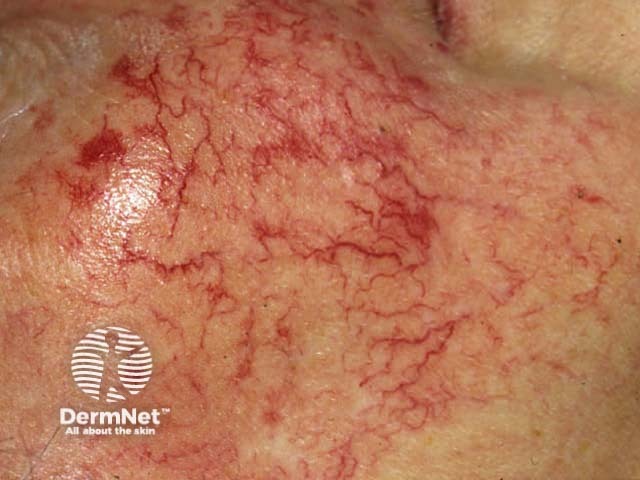Main menu
Common skin conditions

NEWS
Join DermNet PRO
Read more
Quick links
For each of the ten cases, study the image(s) and then answer the questions. You can click on the image to view a larger version if required.
Each case should take approximately five minutes to complete. There is a list of suggested further reading material at the end of the quiz.
When you finish the quiz, you can download a certificate.

Do you think she requires any investigations?
For most patients with facial telangiectasia, it is a familial tendency, often aggravated by exposure to the elements (sunlight, wind and cold). It may precede or follow a diagnosis of rosacea; inquire about flushing and inflammatory papules or pustules. Telangiectasia may be a sign of hyperoestrogenism for example in those on the oral contraceptive pill or with liver failure, or seen as part of the CRST syndrome (Calcinosis, Raynaud´s, Sclerodactyly and Telangiectasia). Unusual sites for matt telangiectases, such as the lips and tongue, may indicate Osler-Weber-Rendu syndrome (hereditary haemorrhagic telangiectasia). Rarely, facial telangiectasia arises as a side effect of calcium channel blockers. Suspicion of an underlying cause should result in appropriate investigations.
Advise on treatment.
The management of facial telangiectasia has been markedly improved by the introduction of vascular lasers. These are considerably more effective than diathermy or electrolysis, and are less likely to scar. Several New Zealand dermatologists have suitable lasers in their private offices (copper bromide, KTP, Krypton, pulse dye and others). Most patients receive one to four treatments at six-weekly intervals. Response depends on the specific treatment and the underlying size and depth of the vessels.